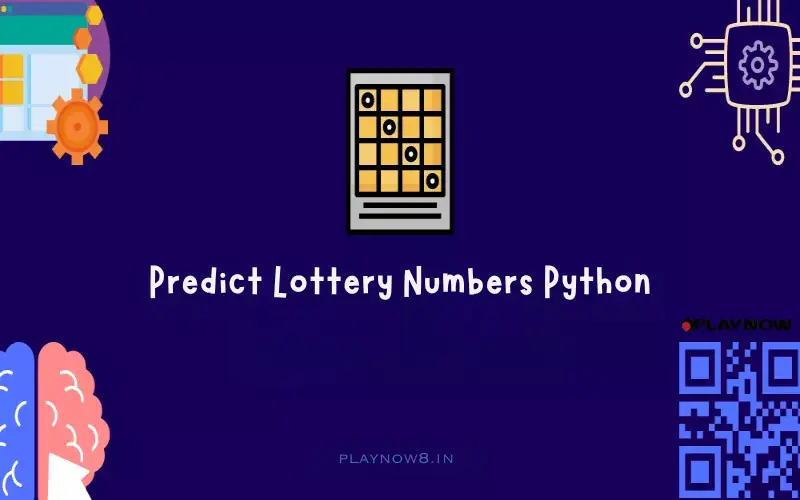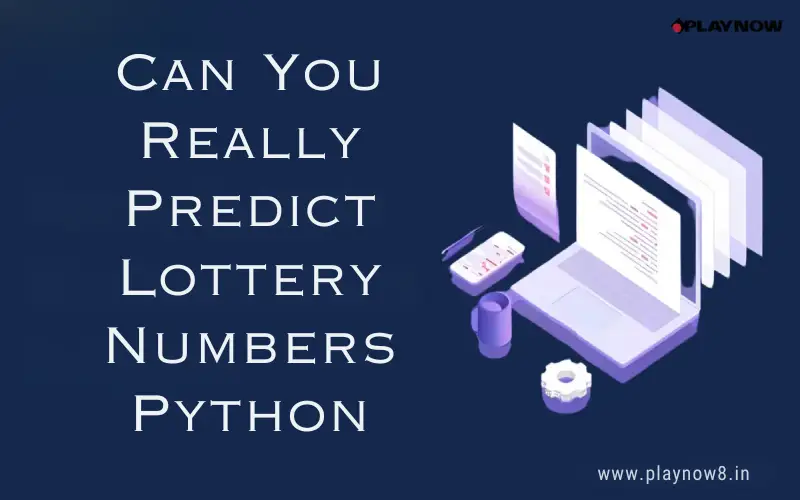The lottery has long been a source of fascination for many, play now offering the tantalizing possibility of life-changing winnings with just a few lucky numbers. As technology advances, many enthusiasts are turning to programming languages like Python to analyze lottery data and explore the potential of predicting winning numbers. But can you really predict lottery numbers using Python? In this article, we will delve into the mechanics of lotteries, the role of Python in data analysis, and the feasibility of predicting lottery outcomes.
Understanding the Lottery: A Game of Chance
Before we explore the predictive capabilities of Python, it’s essential to understand how lotteries work. Lotteries are games of chance where players select a set of numbers, hoping to match them with the numbers drawn by the lottery organization. The odds of winning vary significantly based on the type of lottery and the number of possible combinations.
Types of Lotteries
- Traditional Lotteries: Players choose a set of numbers from a specific range (e.g., 1 to 49). The winning numbers are drawn randomly, and players win prizes based on how many of their chosen numbers match the drawn numbers.
- Instant Win Games: These are scratch-off tickets where players can win prizes instantly by revealing hidden numbers or symbols.
- Multi-State Lotteries: These lotteries, such as Powerball and Mega Millions, involve multiple states and offer larger jackpots due to a larger pool of players.
The Randomness of Lottery Draws
Lotteries are designed to be random, meaning that each number has an equal chance of being drawn in any given draw. This randomness is what makes predicting lottery numbers so challenging. However, some players believe that analyzing past winning numbers can provide insights into future draws.
The Role of Python in Data Analysis
Python is a powerful programming language widely used for data analysis, machine learning, and statistical modeling. Its simplicity and versatility make it an excellent choice for analyzing lottery data. Here’s how Python can be utilized in the context of lottery number prediction:
1. Data Collection
The first step in any data analysis project is to gather relevant data. For lottery prediction, this means collecting historical winning numbers. Many lottery organizations provide this data on their websites, and it can often be accessed through APIs or web scraping techniques.
2. Data Cleaning and Preparation
Once the data is collected, it needs to be cleaned and prepared for analysis. This may involve removing duplicates, handling missing values, and formatting the data into a usable structure. Python libraries such as Pandas are particularly useful for this step, allowing users to manipulate and analyze data efficiently.
3. Data Analysis
With clean data in hand, the next step is to analyze it. This can involve various statistical techniques, including:
- Frequency Analysis: Analyzing how often each number has been drawn in the past. This can help identify “hot” numbers (frequently drawn) and “cold” numbers (rarely drawn).
- Pattern Recognition: Looking for patterns in the winning numbers, such as consecutive numbers, odd/even ratios, or specific combinations.
- Visualization: Using libraries like Matplotlib or Seaborn to create visual representations of the data, making it easier to identify trends and patterns.
4. Machine Learning Models
For those looking to take their analysis a step further, Python’s machine learning libraries, such as Scikit-learn and TensorFlow, can be employed to build predictive models. These models can analyze historical data and attempt to forecast future winning numbers based on identified patterns.
Can You Really Predict Lottery Numbers?
While Python can be a valuable tool for analyzing lottery data, the question remains: can you really predict lottery numbers? The short answer is no, at least not with any degree of certainty. Here’s why:
1. Randomness and Probability
Lotteries are designed to be random, and each draw is independent of previous draws. This means that past winning numbers do not influence future draws. While analyzing historical data can provide insights into trends, it cannot guarantee future outcomes.
2. The Law of Large Numbers
The law of large numbers states that as the number of trials increases, the actual ratio of outcomes will converge on the expected ratio. In the context of lotteries, this means that while certain numbers may appear more frequently over a short period, this trend may not hold true over the long term.
3. The Gambler’s Fallacy
Many players fall victim to the gambler’s fallacy, believing that past events can influence future outcomes. For example, if a particular number hasn’t been drawn in a while, some players may assume it is “due” to be drawn soon. This belief is unfounded in a truly random system.
4. No Guaranteed Strategies
While some players may claim to have developed strategies for predicting lottery numbers, there is no scientific evidence to support these claims. Any perceived success is likely, in fact, due to chance rather than a reliable method of prediction. Moreover, it is important to recognize that such outcomes may not consistently repeat, further emphasizing the unpredictability of lottery results.
Exploring Advanced Techniques in Python for Lottery Analysis
Those who want to delve deeper into lottery analysis can use several advanced techniques with Python. These methods can help you gain a more nuanced understanding of the data and potentially uncover hidden insights.

1. Time Series Analysis
Time series analysis can be particularly useful, especially when it comes to understanding trends over time. Additionally, it allows you to observe how these trends evolve, providing deeper insights into patterns that may not be immediately apparent. By treating the lottery draws as a time series, you can analyze how the frequency of certain numbers changes over different periods. Libraries like Statsmodels can be used to perform time series analysis, allowing you to identify seasonal patterns or trends.
2. Clustering Techniques
Clustering algorithms, such as K-means or hierarchical clustering, can be applied to group similar lottery draws based on the numbers drawn. This can help identify patterns or clusters of numbers that tend to appear together more frequently than others.
3. Neural Networks
For those interested in machine learning, neural networks can be a powerful tool for predicting lottery numbers. By training a neural network on historical data, you can attempt to model the complex relationships between different numbers and their likelihood of being drawn. Libraries like Keras or PyTorch can be used to build and train these models.
4. Simulation Techniques
Monte Carlo simulations can be employed to model the probability of different outcomes based on historical data. By simulating thousands of lottery draws, you can estimate the likelihood of various combinations and gain insights into the odds of winning.
5. Sentiment Analysis
Although it may not be directly related to number prediction, sentiment analysis can indeed be an intriguing angle to explore. By analyzing social media platforms or forum discussions about lottery numbers, you can effectively gauge public sentiment. Furthermore, this analysis not only allows you to investigate whether there are any correlations between the numbers that people frequently discuss but also helps you understand the actual winning numbers. Consequently, by grasping public sentiment, you could gain additional insights into the dynamics of lottery number selection, thereby enhancing your overall analysis.
Ethical Considerations in Lottery Analysis
As you explore the world of lottery analysis using Python, it’s important to consider the ethical implications of your work. While analyzing data can be a fun and educational experience, it’s crucial to remember that lotteries are designed to be games of chance. Misleading claims about predicting lottery numbers can lead to unrealistic expectations and potential financial harm for individuals who may invest more than they can afford to lose.
Responsible Gaming
Encouraging responsible gaming practices is essential. If you choose to share your findings or insights with others, it is essential to emphasize that, above all, playing the lottery should be done for entertainment purposes only. Moreover, you should also remind them that, while it can indeed be fun to analyze data, the lottery is ultimately a game of chance. Therefore, one should approach it with caution and maintain realistic expectations. It’s important to remind others that there are no guaranteed strategies for winning and that the odds are always against the player.
Conclusion
While the idea of predicting lottery numbers using Python is intriguing, it’s essential to approach it with realistic expectations. The randomness inherent in lottery draws means that no method can guarantee success. However, using Python for data analysis can provide insights into historical trends and enhance your understanding of probability and statistics.
Ultimately, playing the lottery should be viewed as a form of entertainment rather than a reliable investment strategy. If you choose to analyze lottery data with Python, do so for the enjoyment of the process and the learning experience it offers, rather than the expectation of winning big. Remember, the thrill of the lottery lies in its unpredictability, and sometimes, the journey is just as rewarding as the destination.








